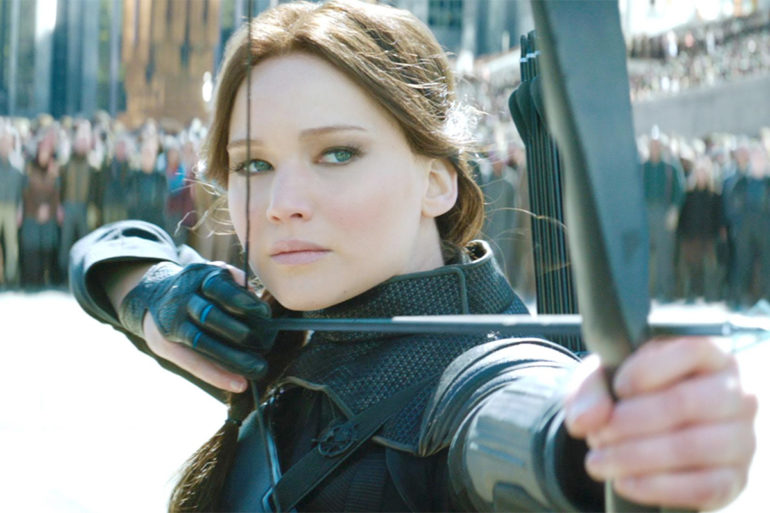Following the beginning of the end, we finally get the end of the end. The Hunger Games is but the latest young adult franchise to offer us an extended goodbye, whether we wanted it or not. The splitting of final chapters has proved a lucrative phenomenon thus far, with Harry Potter and Twilight raking in twice as much moolah despite predictions that the first installments would suffer by comparison. In both cases, neither first nor second proved especially memorable, and so the book-splitting idea continues. Mockingjay Part I took a lurch away from the diluted Battle Royale antics to offer a CliffsNotes interpretation of the themes of Costa-Gavras via drab underground caverns in the cuddliest totalitarian society imaginable (Anyone who doesn’t want to give Donald Sutherland’s beardy face a big hug needs to check their pulse).”
Initial hopes that director Francis Lawrence’s final instalment will pick up the pace are dealt a blow from the start, as we’re inelegantly returned to the events of the first film, without even the grace of a “Previously on The Hunger Games” recap for any noobs in the audience. We open on Katniss Everdeen (Jennifer Lawrence) sporting emotional and physical bruises, as this reluctant symbol of the revolution against dictatorial leader Snow (Donald Sutherland) finds the casualties are becoming more and more personal. She risks her life and those of the ones she loves as the armies of Panem’s twelve districts advance on the Capitol. Sounds like a barrel of laughs, eh? After the novelty of the first Hunger Games, these films have grown more and more dour as the clouds of rebellion have swept in. While Suzanne Collins’ source novels may have tapped into a certain vein of teenage rebelliousness, there’s precious little here that feels even vaguely rebellious. All the stalwarts of YA adaptations are here: an increasingly mopey tone, a surfeit of climactic action where once there were smarts, and heavyweight actors with not enough to do.
As odd as it sounds, the standing of both the character of Katniss and Lawrence’s work in the role mean that Mockingjay Part 2 is less concerned with the revolution that with its symbol. The Girl on Fire is a rousing figurehead to spur people to battle, but there’s not much battle to be seen onscreen. Once again, Katniss is being used as a PR-bolstered leader to advance the cause of the rebels, led by president Coin (oddly underplayed by Julianne Moore). Katniss and her TV crew (led by Natalie Dormer’s director Cressida) only enter the Capitol’s outskirts after the initial assault by the district armies, which we never see. The city is rigged with Hunger Game-aping booby traps but, bar one setpiece, anyone expecting Saving Private Ryan-alike shots of Ms. Everdeen dodging bullets and explosions is going to be slightly underwhelmed. The troop ventures largely cautiously. Their evasion of these perils involves suspending a certain amount of logic, and more than a little genre-hopping to keep audience interest. There’s speechifying aplenty, while an underground sojourn pushes the PG-13 rating to the limit by ripping off The Descent. The action comes in fits and bursts, in between healthy doses of angst.
The main relationships at the core of Mockingjay Part 2 see Katniss having to choose between old friend and bodyguard Gale (Liam Hemsworth) or newly-returned, war-weakened Peeta (Josh Hutcherson). For a series that prided itself on its sociopolitical bite, it’s strange to see this storyline get a considerable share of screentime. The three leads know their roles well enough for us to go along with this, but the sturm und drang ends up feeling too strung out. It also doesn’t help that these three relatively straight arrows are surrounded by a charismatic gallery of eclectic oddballs, played by considerable talents. Jena Malone’s PTSD-ridden Johanna steals every scene she’s in, occasionally giving pause as to wonder what this franchise might have looked like with her in the lead. The returning old hands are given very short shrift, with Stanley Tucci, Elizabeth Banks and Woody Harrelson reduced to extended cameos or exposition duty. The final screen appearance of Philip Seymour Hoffman feels like a terrible waste for different reasons, but at least he exits with many new fans who will know him as Plutarch Heavensbee. (Given how underplayed Heavensbee is, those same fans’ minds will be blown when they come to watch The Master.) At least Sutherland is wonderfully boo-hissable as the despot driving his subjects to desperation.
For its first two acts, Mockingjay Part 2 feels inescapably episodic; like a round of the Hunger Games, particular challenges come and go to be overcome by our heroes, but only sporadically does it achieve the pulse-accelerating highs for which it yearns. A late shootout with Capitol refugees caught in the crossfire is a definite highpoint, both intense and grimly relevant. Mockingjay Part 2 wears its grim tone like a badge of honour; it opens in a hospital ward, and ends with Katniss telling of the nightmares that still plague her long after the Hunger Games. In that sense, a moody teenager might latch onto its prolonged saga of anti-establishment upheaval, but the growing darkness and increased flab of warfare and romance may leave older audiences a little wearied. The Girl on Fire’s flame has dimmed since it was first lit.

